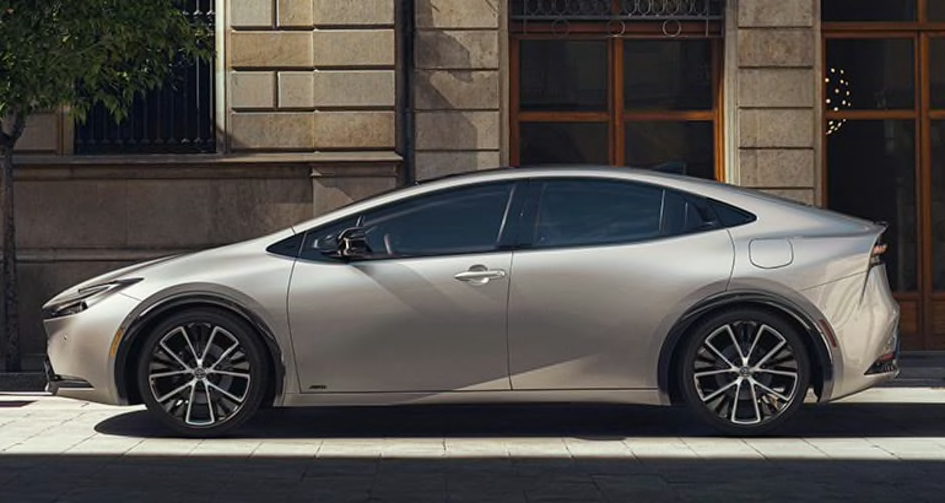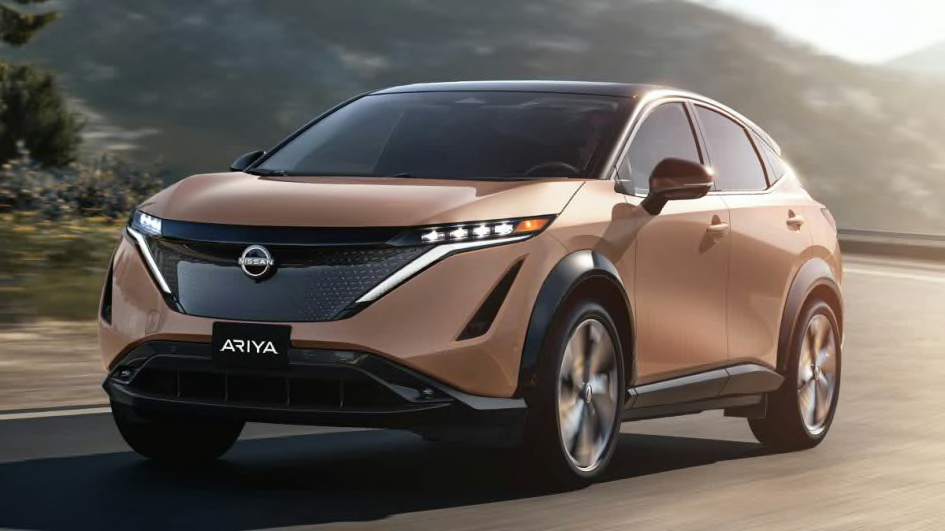
Hybrid/EV Buying Guide
Hybrids, plug-in hybrids, and electric vehicles (EVs) provide energy-efficient transportation while lowering emissions, diminishing noise, and reducing operating costs. According to a Consumer Reports study, EVs can cost less to fuel and are cheaper to repair and maintain than comparable gasoline-powered models. But electrified vehicles—hybrids, plug-in hybrids, and EVs—are different from gasoline models and come with their own set of compromises. Hence, it’s important to understand the advantages and disadvantages of each before choosing your next vehicle.
In this buying guide, we’ll explain how these technologies work and provide the insights necessary to choose the model that will meet your needs and goals, based on our real-world, collective experience with all types of electrified vehicles. (For further insights, see Electric Cars 101.)
- Hybrid cars and SUVs are among the most reliable vehicle types.
- Most car types—from small cars to pickup trucks—are available with some kind of electrification.
- Pure EVs tend to be expensive, but some qualify for federal income tax credits.
- Plug-in hybrids give some all-electric miles before reverting to regular hybrid operation.
- EVs might cost more to insure.

Photo: Toyota Photo: Toyota
Why Buy a Hybrid?
Hybrids provide the best of both worlds, teaming an electric motor with a gasoline engine. By combining a relatively small gasoline engine, an electric motor, and a battery pack, hybrids use electric-only propulsion at low speeds on light throttle. Even for higher power demands, where the gas engine kicks in, the electric motor provides assistance and boosts overall efficiency. And thanks to regenerative braking, hybrids are able to recapture energy that would otherwise be lost. This way, hybrids get excellent gas mileage and are very low on emissions. They never need to be plugged in and are always ready to go. You fill them up with gas at a regular gas station like a conventional car.
Hybrid technology usually comes at a price: These cars typically cost $2,000 to $3,000 more than comparable conventional cars, although the difference in purchase price is often offset by fuel savings. (The Toyota RAV4 LE, for example, starts around $28,000. The hybrid version starts around $31,000 in LE trim.)
There are many hybrids with prices starting around $25,000 and topping out around $30,000, such as the efficient Hyundai Elantra and Toyota Prius. Buyers can also opt for hybrid versions of popular SUVs, such as the Ford Escape, Honda CR-V, Hyundai Tucson, Kia Sportage, and RAV4. Mainstream family sedans like the Honda Accord, Hyundai Sonata, and Toyota Camry and Corolla also come in hybrid versions. Although minivans aren’t as popular as they used to be, some, such as the Chrysler Pacifica, are available as hybrids—and the Toyota Sienna is offered only as a hybrid. Finally, we’re seeing a slight influx of hybrid pickup trucks, most notably the Ford F-150 and Maverick, as well as the Toyota Tundra.
Mild Hybrids
There is some buzz about mild hybrid technology. These cars have a stronger battery (typically 48-volt, as opposed to the traditional 12-volt) that smooths out the fuel-saving stop-start system, and allows accessories, such as air conditioning, to operate seamlessly during engine shutoffs, such as when sitting at a red light. Models include the Audi A3 and Ram 1500 pickup. While a mild hybrid system does contribute toward improved efficiency, the benefits are significantly less than with a traditional hybrid.
Plug-In Hybrids
Plug-in hybrid-electric vehicles, or PHEVs, have a larger battery than a regular hybrid, and they can drive on electric power for longer distances and more often, but to benefit from that ability, they need to be charged. Once the battery is discharged, they operate as a regular hybrid. PHEVs can get by with Level 1 charging (120 volts) because of their small batteries (relative to pure battery electric vehicles, or BEVs) and because they don’t rely solely on their battery. Most models can travel between 20 and 40 miles on the battery and electric propulsion system before the gasoline engine kicks in. Our tested Toyota RAV4 Prime, for example, was able to travel 40 miles on electric-only propulsion before the gas engine started. We got 34 mpg overall when the RAV4 transitioned to hybrid mode, compared with the 37 mpg overall we got with the regular, non-plug-in RAV4 Hybrid. Note that high power demand, such as quick acceleration and climbing hills, will trigger the gas engine even during the electric-drive portion.
For those with short trips or commutes that are within the electric-only range, plug-ins can provide the benefits of an electric car while still having a gas engine available for longer trips without worries about charging or range limitations. To reap the real-world benefits, owners have to charge frequently. Plug-ins tend to be less efficient on long trips (and less efficient than their regular hybrid counterparts because of their extra weight), where the vast majority of miles are driven on gas power.
But the premiums charged for some plug-in models keep them from being great deals. For example, the Subaru Crosstrek Limited starts around $30,000. The well-equipped plug-in hybrid version costs around $37,000.

Photo: Nissan Photo: Nissan
Should I Buy an EV?
For now, electric vehicles—whether BEV or PHEV—carry a price premium over comparable gasoline-powered vehicles. (That may change late in the decade.) However, EVs have dramatically lower running costs because they require less maintenance, and depending on where you live, electricity is likely to be cheaper than petroleum. And federal and local incentives can effectively reduce the purchase price.
The range of EV types has grown considerably since the days of the modest Nissan Leaf. Now consumers can choose futuristic-looking models like the Hyundai Ioniq 5 and Kia EV6; SUVs such as the Chevrolet Blazer and Equinox; high-end cars and SUVs from Audi, BMW, Cadillac, Lexus, and Mercedes-Benz; and even pickup trucks like the Ford F-150 Lightning, Rivian R1T, and upcoming Chevrolet Silverado EV.
Tesla was once the new kid on the block, but now startups such as Lucid, Rivian, and VinFast—along with resurrected brands Fisker and DeLorean—are also muscling in.
Almost every manufacturer is getting into the EV market.
Pricing ranges from around $27,000 for the Chevrolet Bolt and can climb well past $150,000 for top-shelf luxury models.
Plus, lower carbon dioxide emissions and air pollution, and reduced dependence on fossil fuels, are icing on the cake. And a federal incentive of up to $7,500 can increase the savings. (Learn more about available incentives on the Department of Energy website.)
Electric cars are very efficient, and most new models can deliver from 200 to 300 miles of cruising range to satisfy the needs of many drivers without daily charging. EVs are very clean because they have no tailpipe emissions. They are also quiet and provide punchy acceleration. But charging them can take hours—depending on the charging source—and driving them for long distances requires extra planning regarding where and when you’ll charge.
It’s also well-established that cold weather takes a toll on the range of electric vehicles. In our tests, we found that cold weather saps about 25 percent of range when cruising at 70 mph compared with the same conditions in mild weather. Unlike a gas car, where the heat is a byproduct of the running engine, an EV has to produce cabin heat and manage an optimal battery temperature with energy that comes from the battery, in turn reducing range. And shorter trips in the cold with frequent stops and reheating of the cabin can reduce the range by 50 percent.
EVs usually cost thousands more to buy than conventional cars, although much of that difference can be offset by federal and state subsidies, and lower maintenance and fueling costs.
Certain regions of the country are also better suited to using electric cars. Some have better public charging infrastructure, more favorable electric rates, and milder weather, which doesn’t tax the battery as much. And some areas have cleaner electric power generation than others.
If you live in a house, as opposed to an apartment building, it’s feasible to charge your EV at home. We recommend getting a home charger (known as electric vehicle supply equipment, or EVSE) that works on 240-volt (Level 2) charging installed inside or outside your garage. That way, you’ll be able to charge your EV overnight. The cost is typically $500 to $700 for a home charger. Parts and labor can add $1,200 to $2,000. (Learn how to choose the best home charger based on our tests.)
Whether or not an EV is for you depends on your use—where you live and the distances and climate in which you drive, your willingness to plug in as frequently as necessary, and your ability to pay more for the car and reap the benefits in the long run. If you’re keeping a conventional vehicle in your household, the decision is easier. (For more help in deciding, read How to Decide If a Hybrid, Plug-In Hybrid, or Fully Electric Car Is Right for You.)

Photo: Toyota Photo: Toyota
Fuel-Cell Cars
A fuel-cell car is an electric car that produces its electricity onboard instead of storing it in a large battery pack. Fuel cells generate electricity from hydrogen (the most abundant chemical element on Earth) through an electrochemical reaction whose only major byproduct is water. Hydrogen fueling stations are few and far between. Most are located in the Bay Area or in the Los Angeles metro area.
Currently, only Hyundai and Toyota offer fuel-cell cars to the public, but others such as BMW and Honda will soon follow. These are essentially electric cars with a range of about 300 to 400 miles per refill and relatively short refill times of 5 to 10 minutes. We have driven these cars and found them to be seamless and pleasant to drive. But widespread use of fuel cells remains a long way off. There is no nationwide infrastructure to support it.
Public Charging Networks
Even though research shows that most owners (more than 80 percent) charge at home, electric-car owners may need to use faster public charging on occasion or when taking a long trip. This way owners can stop at a rest area and replenish 100 miles or more worth of range during a 30-minute break. In fact, 100-kilowatt stations can replenish 200 miles in under 45 minutes, and upcoming EVs will be able to charge even more rapidly. For that ability, owners may need to join one of the charging networks available across the U.S., such as ChargePoint, Electrify America, or EVgo. Some public chargers begin working as soon as the user plugs the charging cord into the vehicle (Tesla), but many newer public chargers require the user to swipe a network card or use its associated app.
Subscribers sign up with a network online and link a credit card to their account. They receive a small key tag with a barcode on it, or they can use a smartphone app. The tag is waved in front of the charger when needed, and the subscriber’s account is billed. Some EV charging networks offer a roaming option, which allows subscribers from a different network to charge for an additional fee. (See our test experience with public DC fast chargers.)
Safety and Active Driver Assistance Systems
Consumer Reports’ safety ratings include assessments of crash-avoidance capabilities and crash-test results, based on tests performed by the federal government and insurance industry. Further, our road tests detail issues regarding child seat installation and headlight performance.
Forward collision warning (FCW), automatic emergency braking (AEB) with pedestrian detection, and blind spot warning (BSW) are crash-avoidance technologies that CR believes should be standard on all vehicles. These should be on the next new or used model you buy.
FCW technology provides a visual, audible, and/or tactile alert to warn the driver of an impending collision with a car or an object directly in its path. AEB responds to an imminent collision, braking if the driver does not react in time. BSW monitors a vehicle’s flanks, warning the driver that another vehicle is alongside it, where it may be difficult to see.
Other modern safety advances include telematics systems that can alert emergency personnel if an airbag deploys, such as GM’s OnStar service; lane departure warning systems that sound an alert if the driver changes lanes without signaling; lane keeping assistance to maintain the vehicle’s position in the lane if the driver starts to drift; and rear cross-traffic alert, which monitors the sides of the vehicle when the driver is backing out of a parking spot and can even apply the brakes if needed. (Learn more about car safety.)
Warranty
In most states, automakers are required to provide a warranty on the batteries, as an emissions control part, for eight years or 80,000 miles. In 15 states, they’re required to provide a battery warranty for 10 years or 150,000 miles. Outside the warranty period, new battery replacements for hybrids can cost about $3,000, although used battery packs are readily available for a few hundred dollars.
EV batteries lose charge capacity over time. Studies have shown that EV batteries lose about 10 percent of their capacity over the first five years, and 20 percent over the first 10 years. Because the battery is the sole source of propulsion power, this is a more significant concern with EVs than with hybrids. But it is worth noting that technological improvements promise to reduce this factor. Toyota, for example, has said that its new EVs will retain 90 percent of their original battery life after 10 years.

Chevrolet/Jim Frenak-FPI Studios Chevrolet/Jim Frenak-FPI Studios
New vs. Used
If you’re considering whether to buy a new or used hybrid or electric car, there are several factors to consider. The most important may be obsolescence. Electrified powertrain technology is moving at almost personal-electronics speed. New hybrids have more advanced battery chemistry and software, and they provide bigger fuel-economy benefits than older models. Likewise, there are significant gains in electric-car range with each generation. New electrified cars typically have the latest cutting-edge active safety and infotainment systems and, for EVs, the ability to charge faster.
With a new car, you know what you’re getting, and it is backed by a comprehensive factory warranty. You don’t have to worry about potential service problems or concealed collision damage. You can also have your choice of color, trim line, and option level, and financing rates are typically lower than for a used vehicle.
The key drawback to buying any new vehicle is rapid depreciation. Even when hybrids have lower average depreciation rates than those of most conventional cars (as they historically have had when gas prices have been high), depreciation can account for about half the car’s value in five years. In the case of plug-in hybrids and EVs, the depreciation effectively starts at the post-incentive price. If you’ve made only a low down payment, you can easily find yourself upside down on the loan, where you owe more than the car is worth.
Buying a new EV might entitle you to significant tax benefits, including a federal tax credit of up to $7,500, that are not available to buyers of used EVs.
Browse the Consumer Reports Used Car Marketplace.















